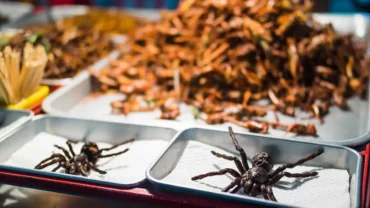You’ve got your tent, your best hiking boots, and a yearning for adventure. Camping Southwestern Ontario is calling you! This region is a treasure trove of secluded campsites, perfect for those who love the serenity of nature. Imagine waking up to the gentle lapping of a lake against the shore, with nothing but the chirping of birds to disturb the peace.
How to Find Your Own Hidden Camping Spot
Firstly, Start your quest by checking out local camping forums and social media groups. Fellow campers are often happy to share their secret spots. Remember, the best places are not on the map – they’re in the stories of those who’ve tread the paths before you. Look for areas outside popular parks, and always be prepared for a bit of off-road travel.
The Thrill of Exploring Unmapped Areas
There’s something exhilarating about setting up camp in a place few have seen. You might stumble upon a hidden waterfall or a clearing with the perfect view of the stars. These are the moments that make camping in Southwestern Ontario unforgettable. Just be sure to leave no trace, so the next adventurer can discover it as you did.
Respecting Nature While Off the Beaten Path
Secondly, When you find that perfect spot, treat it with care. Stick to existing fire pits and use a camping stove if possible. Keep your campsite small to minimize your impact, and always pack out what you pack in. By respecting nature, you ensure these hidden gems remain pristine for years to come.
Some popular places for Camping in Southwestern Ontario
Additionally, Camping in Southwestern Ontario offers a variety of options for outdoor enthusiasts. Here are some popular campgrounds you might consider:
- Windmill Family Campground: A family-friendly campground with both serviced and unserviced sites, as well as cabin rentals. It’s located at 2778 Perth Road 163, Fullarton.
- NITH RIVER CAMPGROUND: Offers 85 sites suitable for all ages, with amenities like full hookups, electric and water hookups, and a pet-friendly environment. You can find it at 4417 Wilmot Easthope Rd, New Hamburg.
- Willow Lake Campground and RV Park: An award-winning campground close to Woodstock, London, and Stratford, with easy access to Highway 401. It’s situated at 595487 Oxford 59, Woodstock.
- Country Gardens RV Park: Located in Wilmot, this park offers overnight and seasonal camping with a variety of amenities. The address is 1335 Witmer Rd, Petersburg.
Folktales and History of Southwestern Ontario’s Wilderness
Equally important, You’re not just camping! You’re stepping into a storybook. Southwestern Ontario’s wilderness is steeped in tales as old as the trees. Did you know that the region’s forests are said to be home to the elusive Lynx, a creature of Native legend? And every campfire could be crackling on the very ground where the War of 1812 was fought. With every step, you walk through history.
Geographical Wonders Worth the Trek
Again, Imagine a land sculpted by glaciers, with hidden caves and towering cliffs that whisper secrets of the ice age. That’s Southwestern Ontario for you. It’s a place where 30% of Canada’s rarest plants find refuge. And the majestic Bruce Peninsula, a UNESCO World Biosphere Reserve, is just a hike away. You’ll want your camera ready for this!
Campsites with a Story to Tell
Each campsite here has its own tale. Like the Point Pelee National Park, the southernmost point of mainland Canada, where thousands of monarch butterflies pause during their migration. Or the Pinery Provincial Park, where the ancient Oak Savanna ecosystem thrives. These aren’t just campsites; they’re chapters of a living history book.
Connecting with the Land: Indigenous Heritage Sites
You’re camping on lands that have been cherished for millennia. Southwestern Ontario is rich with Indigenous heritage sites. Take the time to visit them and learn about the First Nations’ deep connection with the land. It’s a humbling experience that adds profound depth to your adventure.
Flora and Fauna Field Guide
As you lace up your hiking boots and prepare to venture into the great outdoors, let’s delve into what makes this region’s flora and fauna truly special.
Rare Plant Species in the Region’s Backcountry
Besides, Ever dreamed of stumbling upon a rare botanical gem? Well, get ready, because Southwestern Ontario’s backcountry is a treasure trove of unique plant species waiting to be discovered! From the elusive Showy Lady’s Slipper orchid to the delicate Eastern Prairie Fringed Orchid, each hike is like a botanical scavenger hunt. Keep your eyes peeled and your camera ready—you never know what floral wonders you might stumble upon!
For those eager to dive deeper into the world of rare plants, consider a visit to the Ojibway Prairie Complex in Windsor. This protected area boasts over 160 species of plants, many of which are considered rare or endangered. Guided tours are available for budding botanists of all ages, offering a chance to learn about the importance of habitat conservation and preservation efforts.

Wildlife Watching: What You Might Encounter
As you set out on your camping adventure in Southwestern Ontario, be prepared to cross paths with some of the region’s most iconic wildlife. From majestic white-tailed deer to elusive black bears, the forests and meadows are teeming with critters big and small. Birdwatchers will delight in spotting species like the vibrant Scarlet Tanager or the melodious Wood Thrush, their songs filling the air with music.
In addition, For a truly immersive wildlife experience, consider a visit to Point Pelee National Park, a haven for birdwatchers and nature lovers alike. Situated at the southernmost point of mainland Canada, this peninsula is a critical stopover for migratory birds during their journey across the Great Lakes. Don’t forget your binoculars and birding guide—there’s no telling what feathered friends you might spot along the way!
Responsible Interaction with Natural Habitats
What’s more, While exploring the beauty of Southwestern Ontario’s ecosystems, it’s important to remember our role as stewards of the environment. Whether you’re hiking through a pristine forest or paddling along a tranquil river, practicing Leave No Trace principles ensures that future generations can enjoy these natural wonders as much as we do.
When setting up camp, choose designated campsites whenever possible to minimize your impact on delicate ecosystems. Dispose of waste properly, including food scraps and toiletries, to prevent attracting wildlife and disturbing their natural behaviors. And always tread lightly, staying on designated trails to avoid trampling sensitive vegetation and disrupting wildlife habitats.










Comment (0)